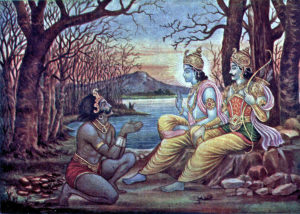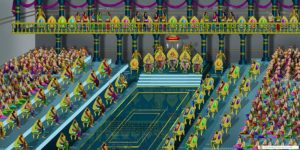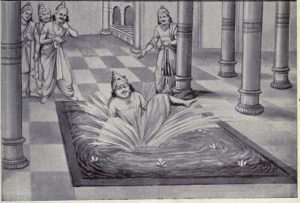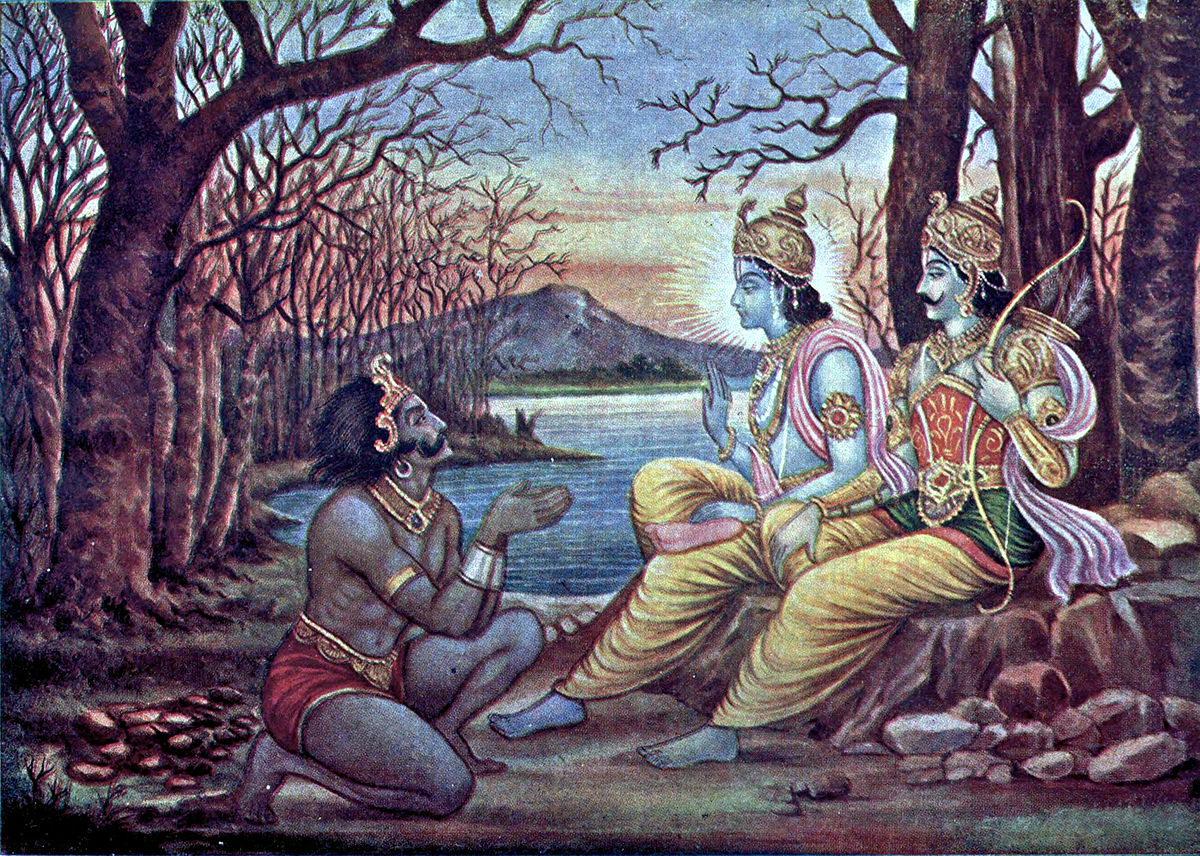A Rakshasa whose name is not well known but the architectural marvel he created is part of a figure of speech in Indian languages, Maya-Sabha. His name is Maya.
 The story of Mayāsura comes into picture when Pandava’s came to Khandavprastha (today’s Delhi) to build their kingdom. Maya was the friend of Takshak a Naga King who ruled the Khandavprastha and Kurukshetra area at the time. While Krishna and Arjuna were seeing the new place they found out that Naga king was ruling the place. Also, the place was full of snakes, forest, large grasslands and so was not suitable for humans to live. In order to clear the land from snakes, initially Arjuna challenged Takshak but, he refused. Arjuna got angry and started burning the whole forest with Agneyastra (Weapon of Fire). So Takshak had to run away. Takshak goes to another place and builds his own capital of new kingdom as Takshashila.
The story of Mayāsura comes into picture when Pandava’s came to Khandavprastha (today’s Delhi) to build their kingdom. Maya was the friend of Takshak a Naga King who ruled the Khandavprastha and Kurukshetra area at the time. While Krishna and Arjuna were seeing the new place they found out that Naga king was ruling the place. Also, the place was full of snakes, forest, large grasslands and so was not suitable for humans to live. In order to clear the land from snakes, initially Arjuna challenged Takshak but, he refused. Arjuna got angry and started burning the whole forest with Agneyastra (Weapon of Fire). So Takshak had to run away. Takshak goes to another place and builds his own capital of new kingdom as Takshashila.
 But during this time Mayā was given protection by Arjuna. So, as a sign of Gratitude Mayā gives a magical powerful club (power of hundred thousand clubs) to Bhima and a conch Devadutta to Arjuna. Also, showing his gratitude towards Yudhishthira, Mayā asks him what he could do? Arjuna asks him to build a palace, especially for his Rajasuya yagya. Mayā was known for his excellence in arts, architecture, and illusions. Interestingly, Mayā also is credited with the creation of space-crafts rotating around Earth in precise orbits. Mayā said that near Kailasa parvat in Mainaka mountains lots of jewels and raw materials are kept with an asura king Vrishaparva. He is also known as Vishwakarma of Asura’s.
But during this time Mayā was given protection by Arjuna. So, as a sign of Gratitude Mayā gives a magical powerful club (power of hundred thousand clubs) to Bhima and a conch Devadutta to Arjuna. Also, showing his gratitude towards Yudhishthira, Mayā asks him what he could do? Arjuna asks him to build a palace, especially for his Rajasuya yagya. Mayā was known for his excellence in arts, architecture, and illusions. Interestingly, Mayā also is credited with the creation of space-crafts rotating around Earth in precise orbits. Mayā said that near Kailasa parvat in Mainaka mountains lots of jewels and raw materials are kept with an asura king Vrishaparva. He is also known as Vishwakarma of Asura’s.
 The palace built by Mayā was absolutely out of this world. It was built in five thousand cubits. The pillars were made of gold. Walls were colorfully decorated with jewels and various colors. It was built to create illusions of all seasons in one room. The floor looked like a waterbed but it was not and there were pools which looked like marble floors. Some of the walls were transparent and some of the windows gave an illusion of being opened but they were merely reflecting the outside world onto their surface. In one of the pool, Duryodhana fell into the water on the day of Yudhishthira’s Rajasuya yagya. The Pandava’s women laughed at him and that’s when Duryodhana took a vow that he will take revenge of this humiliation.
The palace built by Mayā was absolutely out of this world. It was built in five thousand cubits. The pillars were made of gold. Walls were colorfully decorated with jewels and various colors. It was built to create illusions of all seasons in one room. The floor looked like a waterbed but it was not and there were pools which looked like marble floors. Some of the walls were transparent and some of the windows gave an illusion of being opened but they were merely reflecting the outside world onto their surface. In one of the pool, Duryodhana fell into the water on the day of Yudhishthira’s Rajasuya yagya. The Pandava’s women laughed at him and that’s when Duryodhana took a vow that he will take revenge of this humiliation.
Mahabharata mentions that in a battle between Indra and Mayā, Mayā is slain.

bookmarked!!, I love your website!
Maya was not slayed in Mahabharata. In fact Maya was friendly to Indra and Devas, which the other Asuras did not like. Maya built architecture for many races.
Asura Maya could be Ahura Mazda
Maya is said to enter a vimana filled with artificial beings, in Harivamsham. Sounds like robots. The underworld guys were experts in technology.
Mayasura was the person in whose name the lost “Mayan” civilization carries even today. King Bali was sent to “Paataal” the same place where today’s Mexico is. The ancient name of Mexico is Makshikapuram. Bogota derives from the Sanskrit river name “Bhogavati” as described in ancient Indian texts. “Daityas” aka “Danavas” was originally not a race or specie — but just a name given to people who fell for and chased hedonistic, materialistic pleasures and possessions. In ancient times, sons were named based on their mothers’ (or even fathers’) names. For example, “Konteya” meant sons of Kunti (meaning: those from Kunti).
Similarly, “Diti” and “Aditi” were the wives of Rushi Kashyap. The sons of Diti were “called” “Daityas” and the sons of Aditi as “Adityas”. The natures of their sons were class apart. While Adityas were pious, generous, highly spiritual and had no worldly desires, the Daityas craved for material wealth, power and had no qualms of killing someone to accomplish their personal objectives.
With passage of time (centuries, perhaps), Daityas or Danavas came to be considered as a race / clan (whatever you will). The Danavas controlled the whole earth and were very advanced in technology and sciences. The King Ravana, for example, had brought Kings from all parts of the earth under his dominion. Ramayan has several references of various parts of the earth (by the way, this ancient civilisation always knew that the earth was round) including Mayasur’s abode.